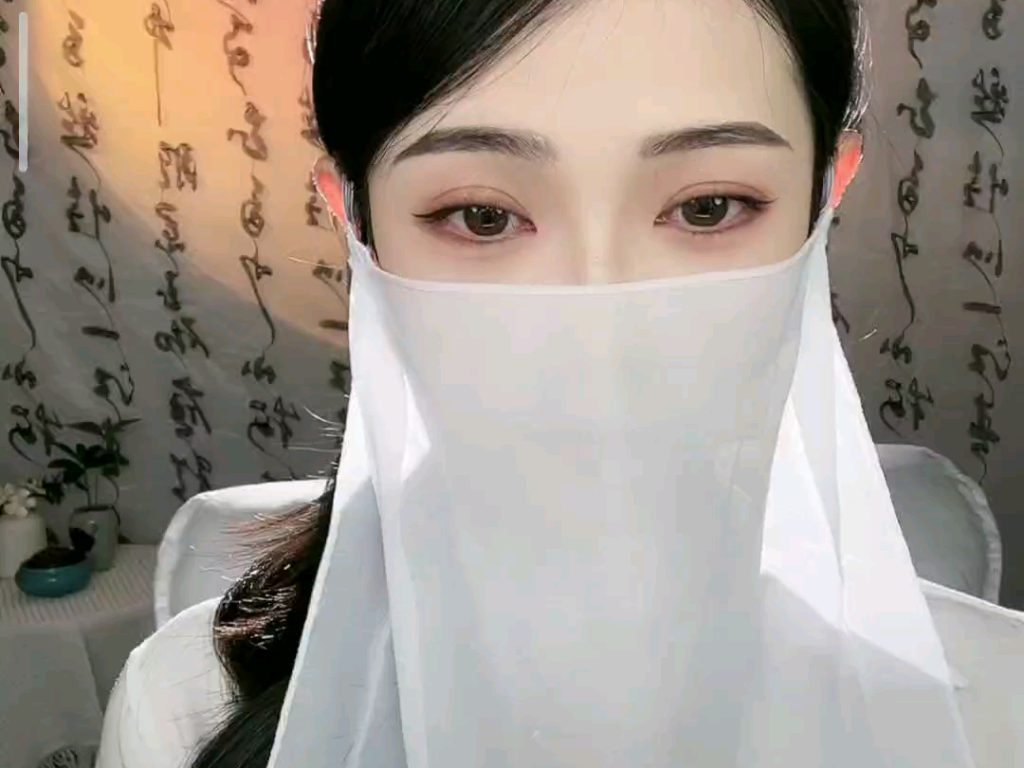
The custom of women wearing veils has a profound historical origin and complex cultural evolution, and its development process can be summarized as follows:
1、 Ancient Origins and Class Symbols
Mesopotamian civilization: As early as 2500 BC, veiled decorations had appeared on the statues of priestesses in Mesopotamia, and the Code of Hammurabi stipulated that noblewomen were required to cover their faces while slaves were prohibited, becoming a symbol of social status.
During the Assyrian Empire period, the law explicitly recognized the right to wear veils as a tool for class differentiation, and married women were required to wear masks, while female slaves and prostitutes were prohibited.
2、 Strengthening the Religious Significance
Before the rise of Islam: Judaism and Christianity had already associated headscarves with female virtues through religious literature, such as the image of the Virgin Mary.
Islamic norms:
The Quran requires the covering of the “shameful body” and binds the veil to the protection of chastity and religious respect.
The color of the headscarf has religious symbolic significance (such as green representing the honor of pilgrims).
3、 Social Function and Geographic Adaptation
Arabian Peninsula: The sunscreen and windproof functions of the veil are suitable for desert climates.
Gender segregation system: Under the patriarchal social structure, the veil has become a tool to restrict women’s participation in public spaces, closely related to polygamy and economic dependence.
4、 Evolution in Modern Civilization
Iran case: the headscarf has gradually evolved from a religious obligation to a cultural identity symbol, and the contemporary generation is facing the challenge of change initiated by the younger generation through the Internet.
The Transformation of Europe: The Black Veil Evolved from Medieval Nun Clothing to a Funeral Etiquette Symbol of the Victorian Era in the 19th Century.
From a contemporary Chinese perspective, the liberation of Tang Dynasty women’s clothing from the “Mi Qi” to the “exposed bun galloping” is seen as a historical reference for the development of bodily autonomy.
5、 Contemporary controversies and diverse interpretations
The veil carries both:
Religious devotion: Some Muslim women see it as an expression of faith
Political Symbols: Iran Becomes the Focus of Traditional and Modern Game 27
Cultural Resistance: Minority Groups Reconstruct Identity through Veils 7
This evolution process reveals the interactive relationship between physical discipline and social power structure, and its future development direction is still closely related to global cultural conflicts and feminist trends.
女性佩戴面纱的习俗具有深厚的历史渊源和复杂的文化演变,其发展历程可概括如下:
一、古代起源与阶层象征
两河流域文明:早在公元前2500年,美索不达米亚地区的女祭司雕像已出现面纱装饰,《汉谟拉比法典》规定贵族女性需遮面而奴隶禁止,成为社会地位的标志。
亚述帝国时期:法律明确将面纱佩戴权作为阶级区分工具,已婚妇女必须蒙面,而女奴和妓女则被禁止。
二、宗教意义的强化
伊斯兰教兴起前:犹太教、基督教已通过宗教文献将头巾与女性美德关联,如圣母玛利亚形象6。
伊斯兰教规范:
《古兰经》要求遮蔽”羞体”,将面纱与贞洁保护、宗教尊重绑定。
头巾颜色具有宗教象征意义(如绿色代表朝觐者荣誉)3。
三、社会功能与地理适应
阿拉伯半岛:面纱的防晒、防风沙功能适应沙漠气候4。
性别隔离制度:父权社会结构下,面纱成为限制女性公共空间参与的工具,与一夫多妻制、经济依附性密切相关。
四、现代文明中的演变
伊朗案例:头巾从宗教义务逐渐演变为文化认同符号,当代面临年轻一代通过互联网发起的变革挑战。
欧洲的转型:黑色面纱从中世纪修女服饰演变为19世纪维多利亚时代的丧葬礼仪象征。
当代中国视角:唐代女性从幂䍠到”露髻驰骋”的服饰解放,被视为身体自主权发展的历史参照。
五、当代争议与多元解读
面纱在现代社会同时承载着:
宗教虔诚:部分穆斯林女性视为信仰表达
政治符号:如伊朗成为传统与现代博弈的焦点
文化反抗:少数群体通过面纱重构身份认同
这一演变过程揭示了身体规训与社会权力结构的互动关系,其未来发展方向仍与全球文化冲突、女性主义思潮紧密关联。
إن ممارسة ارتداء الحجاب لدى المرأة لها جذور تاريخية عميقة وتطور ثقافي معقد ، ويمكن تلخيص عملية تطورها على النحو التالي :
الأصل و رمز الطبقة القديمة
حضارة وادي النهرين : في وقت مبكر من 2500 قبل الميلاد ، تمثال كاهنة في بلاد ما بين النهرين قد زينت مع الحجاب .
فترة الإمبراطورية الآشورية : القانون ينص صراحة على الحق في ارتداء الحجاب كأداة للتمييز الطبقي ، يجب على المرأة المتزوجة أن تخفي وجهها ، في حين أن العبيد والبغايا محظورة .
ثانياً – تعزيز المعنى الديني
قبل الإسلام : اليهودية والمسيحية قد ربطت الحجاب فضائل المرأة من خلال الكتابات الدينية ، مثل صورة مريم العذراء .
المعايير الإسلامية :
القرآن الكريم يدعو إلى تغطية ” العار ” و ربط الحجاب مع حماية العفة والاحترام الديني .
لون الحجاب له معنى رمزي ديني ( مثل الأخضر الذي يمثل شرف الحجاج ) 3 .
وظيفة اجتماعية و التكيف الجغرافي
شبه الجزيرة العربية : الحجاب الواقي من الشمس والرياح والرمال وظيفة التكيف مع المناخ الصحراوي4 .
نظام الفصل بين الجنسين : في إطار الهيكل الاجتماعي الأبوي ، الحجاب يصبح أداة للحد من مشاركة المرأة في الأماكن العامة .
رابعاً – تطور الحضارة الحديثة
حالة إيران : الحجاب تطورت تدريجيا من الالتزام الديني إلى رمز الهوية الثقافية ، التي تواجه الجيل الجديد من خلال شبكة الإنترنت تحديات التغيير .
التحول من أوروبا : الحجاب الأسود من القرون الوسطى زي الراهبات في القرن التاسع عشر الفيكتوري طقوس الجنازة الرمز .
من وجهة نظر الصين المعاصرة : تحرير المرأة اللباس من سلالة تانغ من السلطة إلى ” لو جي بالفرس ” يعتبر إشارة تاريخية إلى تطوير استقلالية الجسم .
خامساً – المنازعات المعاصرة والتعددية في التفسير
الحجاب يحمل في نفس الوقت في المجتمع الحديث :
المؤلف : عبد العزيز بن عبد العزيز آل سعود
الرمز السياسي : إذا أصبحت إيران محور اللعبة التقليدية والحديثة
المقاومة الثقافية : الأقليات بناء الهوية من خلال الحجاب
هذا التطور يكشف عن العلاقة التفاعلية بين الجسم والانضباط الاجتماعي هيكل السلطة ، واتجاه التنمية في المستقبل لا يزال
